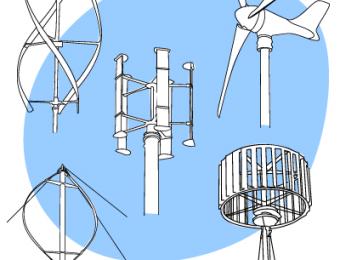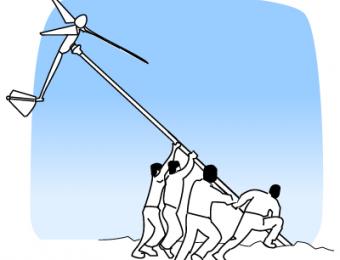
Installing a wind turbine in the ideal location on your property can make a huge difference to the amount of energy you can harvest - and to a lesser extent, to how much maintenance it'll need. In most cases, you'll want the turbine as high as possible, and as free from turbulence as possible to keep a steady, consistent stream of power pouring in.
Assessing your site
Before making any decisions about purchasing a system, you have to know if wind power is going to be viable for your property. While some data is available online showing windspeeds in all parts of Australia, wind turbines can be quite sensitive to differences in wind speed and these kinds of readings are not likely to give you the level of accuracy you need to make an informed choice, except in very windy areas or perhaps where you live within spitting distance of a Bureau of Meteorology wind measuring station.
Things like hills, trees, buildings and other obstacles will affect the wind on your property. Likewise, a phenomenon called 'wind shear' also has to be considered for any system lower than 30m. Wind shear, in a nutshell, causes wind to move more slowly the closer it is to the ground. The height of the measuring stations used for online readings won't necessarily be the same as your turbine.
Local measurements using an anemometer
The best way to figure out what sorts of wind speeds are available to you is to test with an anemometer. This device is usually mounted on a pole and left in place over a certain duration to determine average wind speeds and directions. The longer it's left in place, the more data you can measure and the more representative your data will be. Most experts would recommend that the anemometer be left in place for at least three months, although if wind is likely to vary considerably through the seasons then it may be wise to leave it up longer.
Anemometers aren't cheap, and there's some cost involved in hiring the necessary equipment or having readings done on your site. In some cases, retailers will offer anemometer readings as a part of the overall package though. For accurate readings, there are guidelines on how to conduct anemometer readings in the International Standard IEC61400-12 Wind turbines - Power performance measurements of electricity producing wind turbines.
Wind power is almost always more viable on an open rural property than an urban one, where buildings redirect the wind and provide shelter. In urban locations, wind power might be appropriate for use in coastal regions or at the top of high rise buildings where winds are strongest. Rural properties generally have fewer obstacles for the wind to buffer against and create turbulence.
Depending on the design of your system, you may also have to factor in some noise. A high pitched whine can be an audible nuisance at higher wind speeds. This is normally caused by air passing quickly over the tips of the turbine blades. Special blade designs can eliminate this problem altogether however, allowing for more or less silent operation.
Siting considerations
The best place for a wind turbine is on a hill which is higher than surrounding hills by around 20-40m - usually the highest point on your property. Ideally there will be few or no trees, structures or large boulders around, as these can produce turbulence when the wind buffets against them. Turbulence can cause additional wear and tear on your system, which over time means more maintenance and more ongoing cost.
You will also need to consider the size of the tower or pole that the turbine will be mounted on. A guyed tower (i.e. one supported by guy wires) or a free-standing lattice tower will have a larger ‘footprint’ than a basic monopole. A monopole takes up much less space on the ground, but may be far more costly to erect. How you choose to mount the turbine can therefore open up or close off potential sites.
Tower or pole height
The height at which you position your turbine is important in terms of how strong and how 'clean' the flow of air is likely to be at different heights. Taller towers are normally more expensive, but for most domestic installations will provide energy returns that easily justify the extra cost involved with a taller turbine. On the other hand, for most people there are likely to be restrictions and issues with regards to planning when it comes to building tall towers, and it's worth finding out in advance what you can and can't do where you live.





